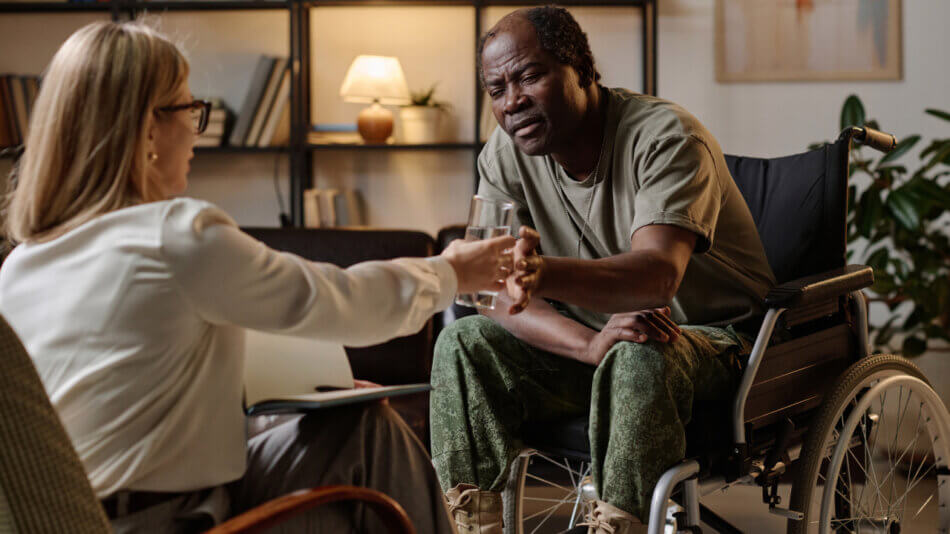Picture this: you’re at your desk when your heart starts pounding, your thoughts spiral, and a wave of fear hits out of nowhere. That’s a panic attack, and it can feel like you’re losing control. If this sounds familiar, day treatment for adults with panic attacks could be a game changer.
In this guide you’ll discover how structured day programs help you tackle symptoms head on, which therapies you’ll try, and how to make insurance cover as much of the cost as possible. We’ll also share tips for keeping your progress on track once you head home.
Understand day treatment
Definition and goals
Day treatment programs blend individual therapy, group sessions, and skill-building workshops into a full-day schedule—usually five days a week. You live at home but head to a clinic or hospital each morning. The goal is to give you intensive support without an overnight stay.
Who it helps
These programs are ideal if you’re having frequent panic attacks that disrupt work, relationships, or daily routines. You might also be juggling obsessive thoughts, compulsive behaviors, or chronic stress. If that’s you, check out our therapy for adults with intrusive thoughts (/therapy-for-adults-with-intrusive-thoughts) or chronic stress treatment for adults (/chronic-stress-treatment-for-adults) for more focused support.
Explore core therapies
Cognitive behavioral therapy
Cognitive behavioral therapy (CBT) helps you spot and challenge the thought patterns that fuel panic. You’ll work with a therapist to map out triggers, test negative beliefs with real-world experiments, and practice healthier reactions. Over time you learn to swap “I’m in danger” for “I can handle this.”
Exposure and response prevention
Pairing well with CBT, exposure and response prevention teaches you to face the physical sensations of panic in a safe space. Your therapist might guide you through exercises that speed up your heart or make you slightly dizzy. When you learn these feelings aren’t dangerous, they lose their power. For obsessive behaviors you can also explore our ocd therapy and exposure response prevention (/ocd-therapy-and-exposure-response-prevention) program.
Mindfulness and relaxation
Learning to calm your mind and body is key. Day programs often include guided meditation, breathing drills, and progressive muscle relaxation. You might start each morning with a ten-minute breath focus to ground yourself and end the day with a gentle body scan. These tools give you quick relief when panic strikes.
Eye movement desensitization
Eye movement desensitization and reprocessing (EMDR) therapy uses guided eye movements to help you reprocess distressing memories and reduce panic triggers. It’s recognized as an evidence-based treatment by the American Psychological Association (Balanced Mind of New York). Some day treatment centers offer EMDR as part of their lineup, so ask if it’s included.
Review insurance options
In-network vs out-of-network
Here’s the thing, in-network providers usually charge lower session rates, and your insurer picks up a bigger share—often 70 to 80 percent. Out-of-network therapists may cost more per session, and reimbursement can drop to 50 to 70 percent. Check your plan’s mental health benefits before you enroll.
Sliding-scale and assistance
If insurance falls short, sliding-scale fees adjust costs based on your income. Many clinics offer payment plans or grants to reduce your out-of-pocket. You can also explore free or low-cost treatment options through community programs (SAMHSA).
FSAs and HSAs explained
Flexible spending accounts (FSAs) and health savings accounts (HSAs) let you pay therapy costs with pre-tax dollars. You’ll need to check eligible service lists, but most day treatment programs qualify. Saving a bit on taxes can make a big dent in your bills (Lumin Counseling).
| Payment option | Coverage or benefit | Typical out-of-pocket per session |
|---|---|---|
| In-network | 70–80% covered | $20–$50 |
| Out-of-network | 50–70% covered | $75–$150 |
| Sliding scale | Variable based on income | $30–$100 |
| FSA/HSA | Paid with pre-tax dollars | Depends on contribution |
Plan your treatment schedule
Typical day program timeline
A sample day might look like this:
- 9:00 AM: Group check-in and psychoeducation
- 10:30 AM: Individual CBT session
- 12:00 PM: Lunch break with group mindfulness
- 1:00 PM: Skills workshop (breathing, relaxation)
- 2:30 PM: Exposure practice or EMDR block
- 4:00 PM: Wrap-up and homework planning
Session frequency and length
Most programs run five days a week for two to six weeks. Sessions last 45 to 60 minutes, with longer workshops mixed in. Your treatment team will tailor the length based on your progress and needs.
Sustain your recovery
Home practice strategies
Practice makes progress stick. Keep a thought log to track patterns, and review your CBT worksheets daily. Use a meditation app for quick mindfulness breaks, and schedule regular interoceptive exposure exercises at home.
Join support networks
Connecting with peers can boost your motivation. Look for local or online support groups, such as our panic and anxiety recovery program (/panic-and-anxiety-recovery-program). Sharing wins and setbacks keeps you on track and reminds you you’re not alone.
Preventing relapse
Relapse doesn’t mean failure—it’s a signal to adjust your plan. Spot early warning signs like skipping home practice or avoiding triggers. Check in with your therapist for booster sessions or join a maintenance group. Having a clear relapse prevention plan can keep panic at bay.
Key takeaways
- Day treatment gives you full-day support using individual therapy, groups, and skill workshops.
- Core therapies include CBT, exposure exercises, mindfulness, and sometimes EMDR.
- Insurance options vary—compare in-network, out-of-network, sliding scale, FSAs, and HSAs.
- Typical programs run five days a week for a few weeks, with 45–60 minute sessions.
- Home practice and support networks help turn short-term gains into lasting calm.
Ready to explore day treatment for adults with panic attacks? Start by checking your insurance benefits and reaching out to a provider. If you’ve tried other approaches, like comprehensive anxiety therapy for adults, and still need more support, day treatment might be your next step. Have questions or tips from your own journey? Share them in the comments below.










